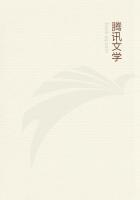An old-fashioned illness known as break-bone fever - doubtless paralleled to-day by the grippe - once had its terrors for a patient increased a hundredfold by the certainty he felt of taking nauseous doses of boneset tea, administered by zealous old women outside the "regular practice." Children who had to have their noses held before they would - or, indeed, could - swallow the decoction, cheerfully munched boneset taffy instead.
The bright white, wide-spread inflorescence of the WHITESNAKEROOT, WHITE or INDIAN SANICLE, or DEERWORT BONESET (E.
ageratoides) is displayed from July to November in the hope of getting relief from the fiercest competition for the visits of butterflies, honey and other small bees, wasps, and flies.From July to September the vast army of composites appear in such hopeless predominance that prolonged bloom on the part of any of their number is surely an advantage.In the rich, moist woods, or by shady roadsides, where it prefers to dwell, the white sanicle makes a fine show.Above its fringy bloom how often one sees the exquisite little lavender-blue butterflies (Lycaena pseudargiolus) pausing an instant to drain the tiny cups of nectar, and usually transferring pollen from the protruding styles (q.v.) as they flit to another cluster.
The opposite, petioled leaves, broadly oval at the base, taper-pointed, coarsely toothed, three-nerved, and veiny, are thin and easily skeletonized by the insects that enjoy the leaves of all this clan of plants.From one to four feet high, the White Snakeroot grows in the United States and Canada as far west as Nebraska.
Closely allied to the eupatoriums, and with similar inflorescence, is the CLIMBING BONESET or HEMPWEED (Willughbaeaa scandens; Mikania scandens of Gray.) Straggling over bushes in swamps, by the brookside thicket, or in moist, shady roadsides, the vine reveals its kinship to the boneset instantly it comes into bloom in midsummer, although its flower clusters are occasionally pinkish.The opposite, petioled leaves are quite different from the boneset's, however, being heart-shaped at the base, and taper-pointed, somewhat triangular, two to four inches long, and one or two inches wide.From Massachusetts and the Middle States even to South America and the West Indies is its range.
WHITE ASTERS or STARWORTS
(Aster = a star) Thistle family In dry, open woodlands, thickets, and roadsides, from August to October, we find the dainty WHITE WOOD ASTER (A.divaricatus; A.
corymbosus of Gray) its brittle zig-zag stem two feet high or less, branching at the top, and repeatedly forked where loose clusters of flower-heads spread in a broad, rather flat corymb.
Only a few white rays - usually from six to nine - surround the yellow disk, whose forets soon turn brown.Range from Canada southward to Tennessee.
First to bloom among the white species, beginning in July, is the UPLAND WHITE ASTER (A.ptarmicoides), which elects to grow in the rocky or dry soil of high ground in the northern United States westward to Colorado.The leaves, which resemble grayish-green shining grass-blades, arranged alternately up the rigid stem, and diminishing in size near the top until they become mere bracts among the flowers, enable us to name the plant.The heads, in a branching cluster, are not numerous; each measures barely an inch across its ten to twenty snow-white rays; the center is of a pale yellow-green, turning a light brown in maturity.
The TALL WHITE or PANICLED ASTER (A.paniculatus), in bloom from August to October in different parts of its wide range, attracts great numbers of beetles, which do it more harm than good; but many more butterflies (some of whose caterpillars feed on aster foliage as a staple), quantities of flies, some moths, swarms of bees, wasps, and miscellaneous winged visitors.Professor Robertson found several thousand callers, representing ninety-eight distinct species, on this one aster during four October days.Such popularity as the asters have attained finds its just reward in the triumphant progress of the lovely tribe (q.v.).For the ******* to name each member of such a horde is quite hopeless.In branching, raceme-like clusters, from August to October, this aster displays its numerous flower-heads, less than an inch across, each with a green cup formed of four or five series of overlapping bracts, and many white rays, occasionally violet tipped.The smooth stem, which rises from two to eight feet above moist soil, is plentifully set with alternate, pointed-tipped, lance-shaped leaves, tapering to a sessile or partly clasping base, and sparingly saw-edged.Its range is from Montana east to Virginia, south to Louisiana, north to Ontario and New England.
The bushy little WHITE HEATH ASTER (A.ericoides) every one must know, possibly, as MICHAELMAS DAISY, FAREWELL SUMMER, WHITEROSEMARY, or FROSTWEED; for none is commoner in dry soil, throughout the eastern United States at least.Its smooth, much branched stem rarely reaches three feet in height, usually it is not over a foot tall, and its very numerous flower-heads, white or pink tinged, barely half an inch across, appear in such profusion from September even to December as to transform it into a feathery mass of bloom.
Growing like branching wands of golden rod, the DENSE-FLOWERED, WHITE-WREATHED, or STARRY ASTER (A.multiflorus) bears its minute flower-heads crowded close along the branches, where many small, stiff leaves, like miniature pine needles, follow them.Each flower measures only about a quarter of an inch across.From Maine to Georgia and Texas westward to Arizona and British Columbia the common bushy plant lifts its rather erect, curving, feathery branches perhaps only a foot, sometimes above a man's head, from August till November, in such dry, open, sterile ground as the white heath aster also chooses.















